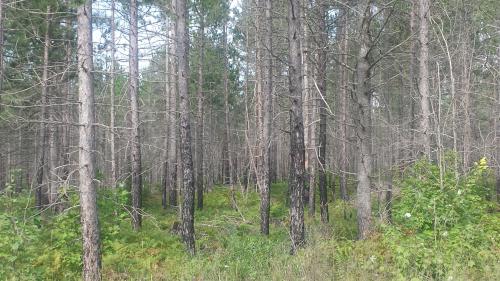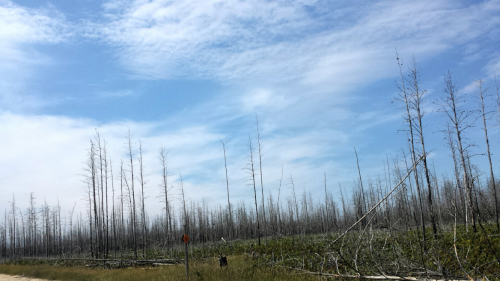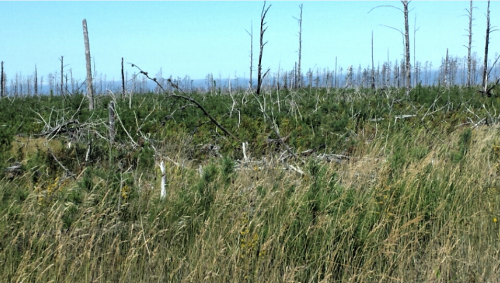Devastating wildfire leaves scars that last for decades but recovery is evident
The slow recovery from the 2012 Duck Lake Fire in Michigan’s Upper Peninsula is an indication of how much impact wildfires can have. Although there is evidence of regrowth and renewal, the scars are still very real and will be for years to come.
In the spring of 2012, a lightning strike in a remote area of Michigan’s Upper Peninsula began a chain of events which had devastating environmental and human impacts. Once ignited, the ensuing wildfire pushed by dry winds raged across Luce County. By the time the fire was under control, more than 21,000 acres had been overrun by the blaze.
Named after the access road near where the blaze started, the Duck Lake Fire is ranked as the third largest wildfire occurrence in modern state history. More than 300 firefighting and logistic personnel served on the fire which spanned 22 days from ignition to 100 percent containment. The fire totaled more than $3 million in suppression costs.
In addition to timberlands destroyed and wildlife killed or displaced, 49 residences, 2 businesses and the equipment from at least one logging contractor were also lost to the blaze. Remarkably, given the ferocity of the event, no human deaths or serious injuries were recorded.
As is the case with many wildland fires, the intensity and impacts to the local ecology were not uniform throughout the burn area. Depending on conditions and cover type, some areas, particularly those heavy with jack pine, were almost totally consumed while adjacent areas with more of a mixed cover type suffered only partial losses.

Surviving red pine showing charred scars from fire. Photo by Mike Schira, Luce County
Field inspection of the burn area four years after the event show the intensity of the blaze has left scars on the landscape in all directions. The DNR conducted clean-up harvest operation on state owned land in the areas traditionally managed for timber shortly after the fire. Working to stay ahead of wood boring beetles that feed on dead trees, 53,857 cords of wood within the area had been salvaged by the end of the first year after the blaze. Areas near waterways and wetlands were left to nature; leaving many acres of dead snags which appear to be the skeletonized remains of the trees consumed by the fire.
Dead snags, primarily jack pine left following the fire. Photo by Mike Schira, Luce Co.
Although it may be difficult to accept the loss of timber and habitat caused by the fire, the remaining dead snags offer a new kind of ecological niche for new wildlife to develop into. The black backed woodpecker, a species listed of special concern by the Michigan Natural Features Inventory, is one example of wildlife which should benefit from the fire’s aftermath.
The jack pine tree itself is remarkably adapted to wildfire events. Their serotinous cones are kept closed by resins which begin to open with temperatures exceeding 120 degrees. Following fire in jack pine stands the cones open up, allowing the wind to distribute seed in the newly exposed soil. In addition to the DNR having planted over 1,200 acres of new seedlings following the blaze, much of the remaining acreage ravaged by the fire is being re-populated by natural jack pine regeneration.
Jack pine regeneration/seedlings following wildfire. Photo by Mike Schira, Luce Co.
These new jack pine stands should provide habitat for the endangered Kirtland's Warbler. The warblers prefer trees 6 to 22 years old for nesting habitat so it will still be a few years before this benefit from the fire is realized.
Private home losses in the area aren’t fortunate enough to have any kind of natural rebuilding assistance. While some have chosen to rebuild, others have forsaken the effort and accepted the loss as absolute. Michigan State University Extension provides some guidance in landscaping suggestions which can help to reduce the chances of structure loss due to wildfire events in the publication Wildfire-resistant Landscape Plants for Michigan E2948.
Valuable suggestions for protecting structures in wildfire prone areas can be obtained through the national Firewise Communities organization. In addition to general safe landscaping ideas, they provide some fire safe construction and maintenance suggestions which have proven to be successful.



 Print
Print Email
Email




